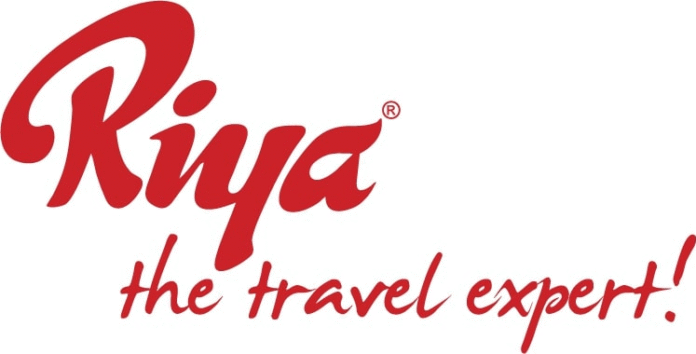Riya Travel, a heavyweight in India’s travel ecosystem with strong footholds across retail, corporate, and B2B segments, has formalised a partnership with Amadeus South Asia to join its Travel Marketplace ecosystem. The move places Riya squarely within the next wave of distribution modernization—where legacy scale meets cutting-edge technology.
This alignment is not just symbolic. It comes as India’s outbound and digital travel markets are witnessing robust acceleration, prompting industry players to rethink business models and competitive moats.
Market Backdrop: The Surge in India’s Outbound and Digital Travel
Explosive Growth in Outbound Tourism
India’s international travel market is slated for impressive expansion. According to credible forecasts, the Indian outbound tourism market is projected to scale from about USD 187,975 million in 2024 to around USD 439,479.6 million by 2032, representing a compound annual growth rate (CAGR) of approximately 11.2 %.
Another projection pegs India’s outbound tourism market reaching USD 55 billion by 2034, growing at a CAGR of 11.4 %.
In terms of passenger volume, India is expected to see outbound departures climb dramatically—some estimates anticipate reaching 39 million passengers by 2028 at an 8 % annual growth from 2023 levels.
This volume growth is underpinned by rising disposable incomes, a swelling middle class, increased direct air connectivity, visa easing in some corridors, and greater global exposure.
Digital Adoption and Distribution Evolution
The mode of booking is also evolving fast. Online channels and technology-driven platforms are already capturing a large share of travel procurement. Research shows that online booking channels hold a dominant share of the outbound tourism market, and their influence will only deepen in the coming decade.
Amadeus itself has produced trend analyses that highlight surges in mobile bookings, app usage, and contactless digital interactions among travelers.
In this environment, digital marketplaces and aggregators are no longer optional—they’re strategic foundations for scale, efficiency, and reach.
Riya’s Move: From Legacy Strengths to Future-Ready Platform
Riya Travel brings to the table four decades of brand equity, operational scale, client trust, and a vast agent/distribution network—attributes that can be invaluable in the evolving travel landscape. By integrating into Travel Marketplace, Riya gains:
- Access to global content, APIs, and provider inventory via one unified interface
- Faster decisioning, real-time updates, dynamic pricing, and yield management tools
- Seamless distribution across product types (flights, hotels, ancillary services)
- Better scalability in the back end, reducing complexity in multi-segment operations
As GMJ Thampy, Founder & CMD of Riya Group Enterprises, put it:
“Our strength lies in reach, scale, and trust. Partnering with Amadeus South Asia for Travel Marketplace allows us to complement these strengths with world-class technology … access to faster, smarter and more seamless solutions.”
From the Amadeus side, Sandeep Dwivedi, Managing Director, Travel Sellers, India Subcontinent, noted that Riya’s presence across multiple segments makes it “a powerful force in South Asia’s travel industry,” and that together they aim to “accelerate digital adoption and empower more travel businesses to innovate, collaborate and thrive.”
Strategic Implications for India’s Travel Distribution
1. Hybrid Distribution is the New Normal
Traditional agencies, online travel agents (OTAs), and technology platforms will increasingly coexist. The winning players will be those capable of operating across channels, leveraging platform efficiencies, and serving both offline and digital clients.
2. Scale + Tech = Competitive Edge
Smaller agencies that lack strong technology integration risk being disintermediated. Meanwhile, for legacy players like Riya, the ability to combine scale with agile tech becomes a competitive differentiator.
3. Higher Margins Through Value-Added Services
With access to richer content and dynamic capability, agencies can upsell premium ancillaries, responsive packages, curated experiences, and personalised travel enhancements—transforming from transaction brokers to experience architects.
4. Agility in Response to Seasonality & Shocks
India’s travel market is marked by volatility—festivals, currency swings, geopolitical risks, policy shifts. Technology platforms (such as Travel Marketplace) can help buffer by offering real-time flexibility, alternate sourcing, and rapid pivoting.
5. Empowering Tier-2/3 Growth
One of India’s biggest travel growth levers lies in smaller cities and underserved geographies. A digital backbone enables agents in these markets to access the same global inventory and capabilities as big metros, leveling the playing field.
Risks, Challenges & Mitigations
- Integration complexity & legacy systems: Migrations and API harmonisation can be tricky; Riya will need strong change management and tech governance.
- Margin squeeze: More transparency can intensify price competition; value differentiation will be key.
- Dependence risk: Overreliance on a single platform or provider might reduce bargaining power—diversification strategies should be maintained.
- Data & compliance: Operating in a large and regulated market like India demands rigorous attention to data security, regulatory compliance, and consumer protection.
Looking Ahead
Riya Travel’s alliance with Amadeus Travel Marketplace is more than a corporate announcement—it is emblematic of a turning point in India’s travel architecture. The outbound market is climbing not just in spending but in digital sophistication. Platforms that enable connectivity, scale, and agility are becoming the battlefield for relevance.
As traveler tastes evolve—from mass tourism to curated, digital-infused journeys—entities like Riya that can meld business depth with technological dexterity are well-positioned. With India poised to become one of the top outbound markets globally by the late 2020s, this partnership signals a readiness to not just participate, but lead.











